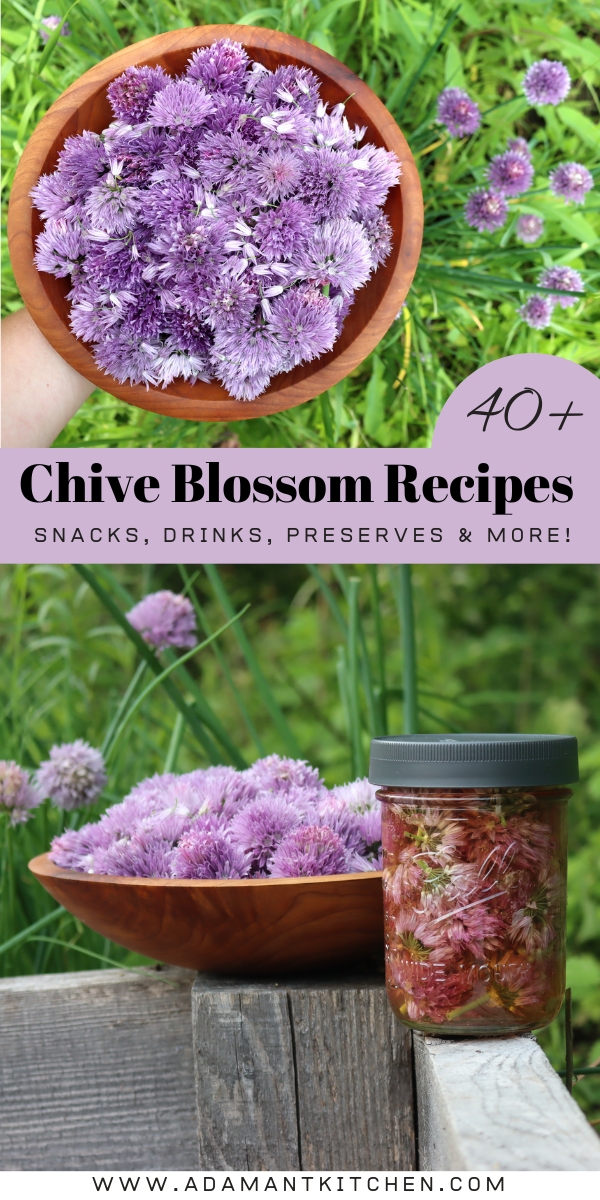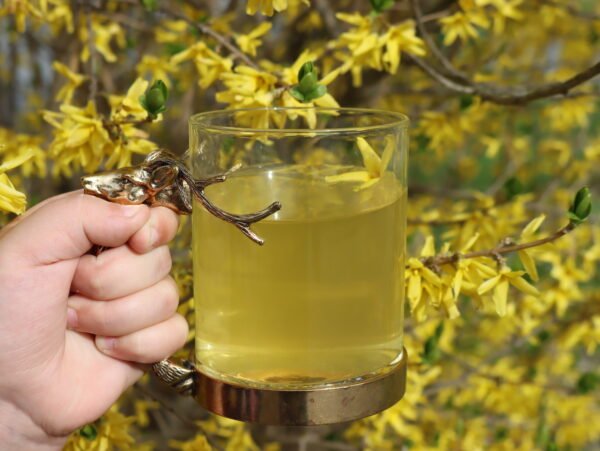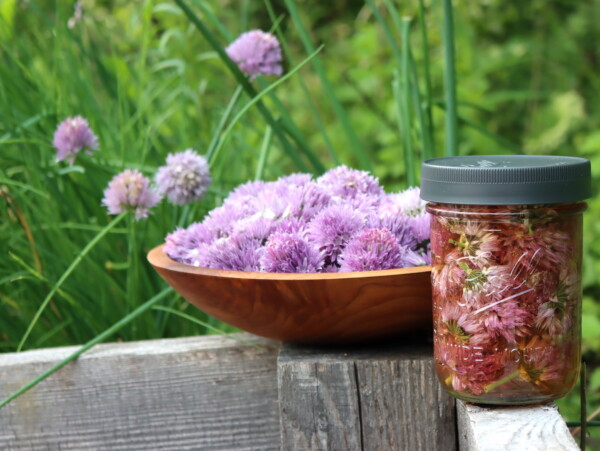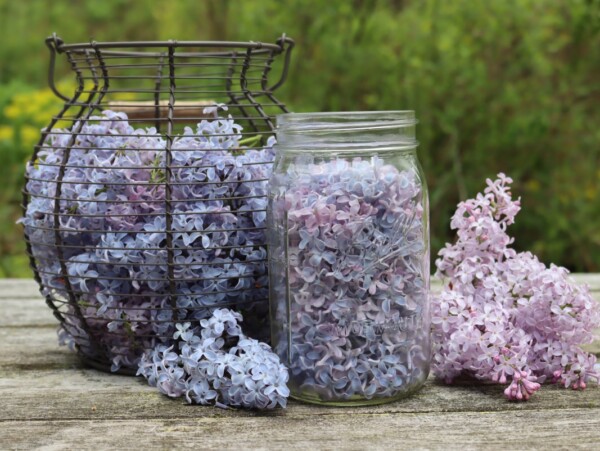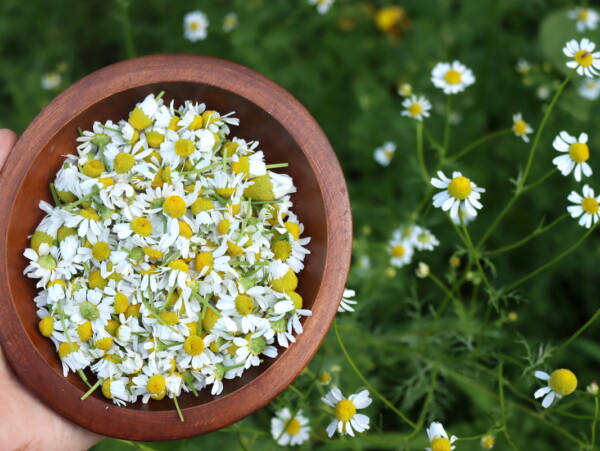This post may contain affiliate links. Please see our disclosure policy.
Chive Blossoms are edible, and if you thought chives were just for baked potatoes, you’ve been missing out. The blossoms of this plant are highly flavorful and can impart their flavor to a variety of dishes spanning from breakfast to dinner.

Chives are one of those perennial herbs that dependably come up, again and again, every year, their stubborn green shoots poking up right through the snow in early spring. Chives will then bloom in mid-spring to early summer, with round pink to pale purple globes bursting open to be visited by pollinators and bumblebees.
Choosing the Best Chive Flowers
Chives are actually a species in the lily family. They have been grown for centuries in Europe for medicinal and culinary means with their use in China tracing back as far as 4,000 years ago.
Chives are easy to grow, needing little maintenance. Every year they return, peeking their shoots up through the earth to blossom into lavender-colored starburst blossoms later in the season.
Although it’s traditionally the leaves that are used, the flowers of the chive plant are also edible, possessing many of the same flavor characteristics.
Common chives (Allium schoenoprasum) will hold a light onion flavor. The blossoms are sweetly spicy with hints of garlic. A related species (Allium tuberosum) known as garlic chives, sports white flowers in the fall which possess a more notable garlic flavor. Its leaves and blossoms are also edible but its flavor is more intense, some finding the flowers to harbor a stronger flavor than the leaves.
Harvest chive blossoms as soon as they open, as their flavor will be strongest during this time. Fresh flowers are best to be used immediately in cooking, although the blossoms can be dried if you find yourself with too many. Just be aware that drying chive blossoms will result in some loss of flavor. For the most potent flavor, use fresh blossoms.
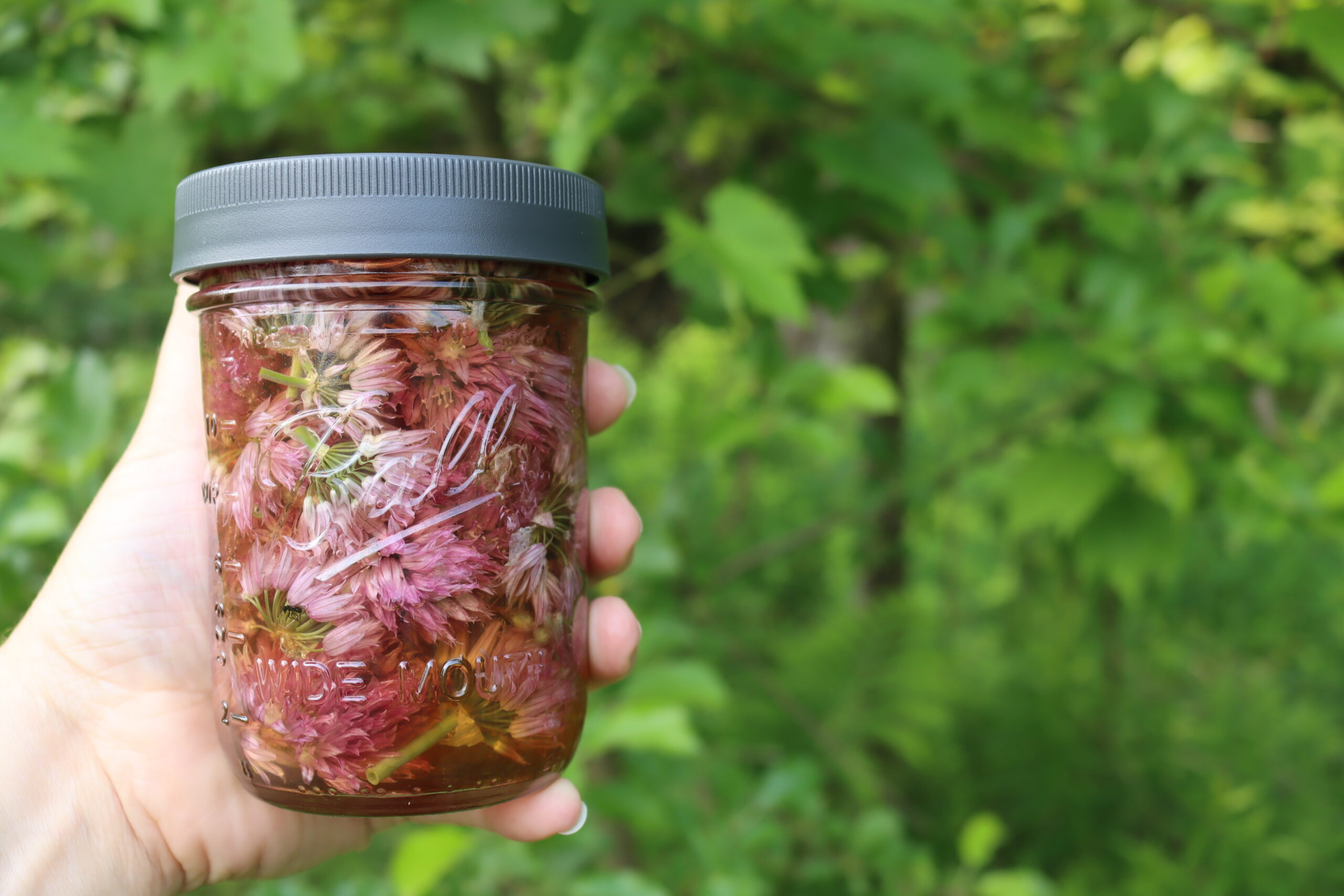
Chive Flower Recipes
While full chives can be diced up and used fresh in a number of culinary uses, not all are aware the blossoms can also be of use, imparting their delicate onion flavor to baked treats and appetizers alike. Blossoms can top everything from soups to salads, be cooked into eggs, baked into breads and infused into vinegar, oils and alcohol.
Be it breakfast, lunch or dinner, chive blossoms can be a welcome addition any time of day.
Fresh Chive Flower Recipes
Fresh chive blossoms are often seen topping salads and soups, imparting their subtle onion flavor to these savory dishes. A chive blossom vinaigrette can be made from fresh chive blossoms, white vinegar and raw honey to top all varieties of summer and spring greens. Consider topping salads with a delicate dollop of flan, or some pickled veggies and goat cheese.
Try serving a summer salad of tomatoes topped with chives to serve with crostini or inside sandwiches. Other wonderful pairings include chive blossoms and beets, or chive blossoms with potatoes and radishes. Soups are another fantastic opportunity to use chive blossoms. Top creamy soups like potato and leek or a silky pea soup. You can use fresh chive leaves in Chinese dumpling soup as well and top with blossoms for color and added flavor.
- Honey & Chive Blossom Vinaigrette
- Green Garlic Flan with Chive Blossoms
- Chive Blossom Salad with Pickled Carrots and Goat Cheese
- Heirloom Tomato & Chive Flower Salad
- Beet and Chive Blossom Salad
- New Potato Salad with Chive Blossoms & Spring Radishes
- Asparagus Soup with Crème Fraîche and Chive Blossoms
- Creamy Potato Leek Soup with Chive Blossoms
- Green Pea Soup with Chive Flowers
- Creamy Chive Dumpling Soup
Chive Flower Breakfast Recipes
Chive blossoms can add dimension and spice to basic breakfast recipes. Eggs in all forms can benefit from the flavor of this savory blossom, be they in an omelet, sunny-side up or scrambled eggs with chicory and chive blossoms on toast.
More savory breakfast options include savory chive blossom-stuffed crepes, cheesy chive blossom scones or chive blossom butter. Even basic toast can be upgraded with this savory blossom – sprinkle fresh chive blossoms over toasted bread topped with fresh radishes or sliced avocado for a filling and healthy breakfast.
- Eggs with Chive Flowers
- Cheesy Chive Blossom Omelet
- Chive Blossom & Cheddar Scrambled Eggs
- Stuffed Chive Blossom and Pansy Crepe Parcels
- Cheddar and Chive Blossom Scones
- Chive Blossom Flax Seed Spelt Scones
- Chive Blossom Butter
- Radish Toast with Chive Blossom Butter
- Avocado Toast with Chives Blossoms
Savory Chive Flower Main Courses
Chive blossoms make a lovely component to many a dinner dish as well. Add chive blossoms to your favorite pastas and sauces. Creamy cappellini accompanied with creme fraiche and lemon juice is a delightful choice.
Savory side dishes can be embellished with chive blossoms as well. Simple blanched asparagus or charred green beans can both be bettered with the mild flavor of chive blossom. Chive buds themselves can even be an entire dish. If you grab a few stems before they flower, you can stir-fry these unbloomed blossoms with mushrooms for a healthy, crunchy treat.
Those already-bloomed flowers won’t go to waste, however. Fry up blossoms in a light tempura batter for a crispy snack or toss chive flowers onto your next flatbread for a light, dinnertime meal.
- Chive Blossom and Pasta
- Capellini with Chive Blossoms and Creme Fraiche
- Asparagus with Sesame and Chive Blossom
- Blistered Green Beans with Apricots and Chive Blossoms
- Stir-fried Chive Buds
- Chive Flower Japanese Tempura
- Chinese Chive Flower Flatbread
Preserving Chive Flowers
Due to the self-seeding nature of chives, they tend to spread – this can result in more chive blossoms than you know what to do with! Fear not – there are a few ways to save and store these savory blossoms for future dishes.
You can dry chive blossoms, just like you can dry chopped chives – but the two should be dried separately as the flowers take longer to dry than the rest of the plant. Just know the flavor will be less intense as with most herbs. You can air dry chive flowers by placing blossoms on a flat surface for a week or more, tossing them every few days to expose all sides to air. A dehydrator will be faster though.
For more ways to extend that oniony chive blossom flavor, consider chive blossom vinegar or chive blossom-infused olive oil. Flower salt is another way to preserve chive flowers as is savory chive blossom jelly, perfect for spreading on sandwiches and crackers.
- Dehydrating Chive Blossoms
- Chive Blossom Vinegar
- Chive Blossom Infused Olive Oil
- Chive Flowers in Salt
- Savory Chive Blossom Jelly
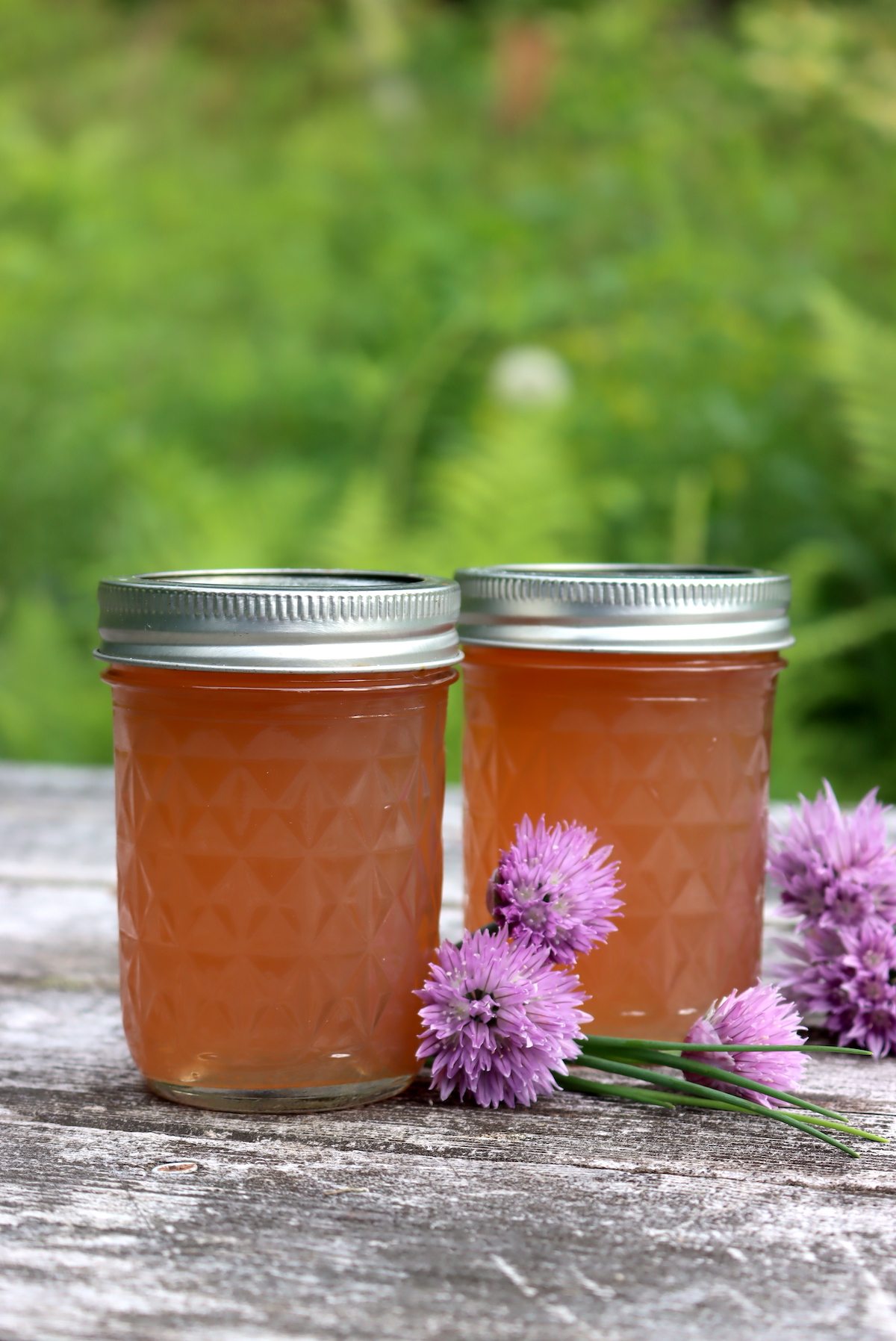
Chive Flower Drink Recipes
If you thought chive blossoms couldn’t quench your thirst, you’re wrong. You can infuse chive blossoms in alcohol like gin to make a chive blossom gibson or make a crafty chive-to-five cocktail with yellow chartreuse, lemon juice and apricot liqueur.
Martinis are another option – garnish with pickled onions for this savory, herbal cocktail.
- Chive Blossoms Gin/Vermouth Infusion
- Chive Blossom Gibson
- Chive to Five Cocktail
- Chive Blossom Martini
Chive Flower Snack Recipes
Feeling peckish, but not interested in a heavy meal? Try these chive blossom appetizers and snacks to satiate your grumbling stomach.
Chive blossoms can be lightly fried when battered and tossed in a pan of hot oil. Use a classic batter recipe or opt for tempura. Simply salt and eat or make a chive blossom dipping sauce for dunking. Improve deviled eggs with chive blossoms by mixing diced blossoms into your egg yolks to serve at your next barbecue. The flavors of mildly oniony flowers lend this snackable dish a nuanced flavor.
Consider mashing chive flowers into goat cheese and topping with honey for another savory appetizer. Serve with crostini or chive blossom crackers for added crunch.
- Chive Blossom Fritters
- Fried Tempura Chive Blossoms
- Chive Blossom Dip
- Chive Blossom Deviled Eggs
- Goat Cheese with Chive Flowers and Honey
- Chive Blossom Crackers

Baked Chive Flower Recipes
You won’t find many (if any) dessert recipes containing chive blossoms – but you will find several baked recipes. Carby delights that involve chive blossoms include chive blossom bread made by kneading chive blossoms right into the dough. Not willing to make bread from scratch? Grab a roll of your favorite dough – phyllo is a great option – and brush with melted butter, then scatter chive blossoms and other herbs atop before baking as usual.
Chive blossom focaccia is another savory baked treat – add a cup of heirloom tomatoes to risen dough and press them in for a more robust flavor.
For another bready delight, consider flaky chive blossom biscuits, made with both chives and chive blossoms for a more robust flavor. Serve with dinner or simply spread with butter for a simple snack. Chive blossom popover or chive blossom buns are wonderful as well – their light onion flavor pairs well with roasts, steaks and stews.
- Chive Blossom Bread
- Heirloom Tomato and Chive Blossom Focaccia
- Chive Blossom Phyllo Tart
- Flaky Chive Blossom Biscuits
- Chive Blossom Popovers
Cultured & Fermented Chive Flower Recipes
Even fermented recipes can benefit from a sprinkle of chive blossoms. You can chop and ferment chives, but be sure to save those chive blossoms as well. They can be used to embellish kimchi, make sauerkraut or be added to pickled eggs for tempting charcuterie platters.
You can also try making capers from chive buds to make slightly onion-tinged delights for topping fish and pasta – all you need is water salt and unopened chive blossom buds.
- Fermented Chives
- Chive Blossom Kimchi
- Chive Blossom Kraut
- Chive Blossom Vinegar Pickled Eggs
- Lacto-Fermented Wild Capers
Edible Flower Recipes
Looking for more edible flower recipes?
